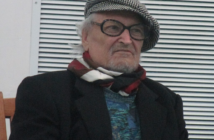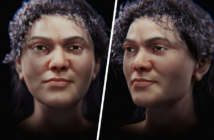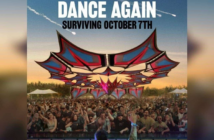TRAINING OF AUTONOMY WORK AS THE WAY OF SOCIALISATION:
ESTIMATION OF OPTIMAL DEGREE OF STUDENT AUTONOMY IN LABORATORY
AND CLASSROOM
Vladimir Romanenkol, Galina Nikitina 2
1North—Western Institute of Printing Matters, Russia. putyatino1941@gmail.com ;
2 North—Western Branch of Academy of Information Technologies in Education, Russia. ladogalake@gmail.com
Abstract: Creativity of students in the laboratory and classroom depends on the degree of his or her autonomy in the period of solving different educational problems. This degree is connected with the number of independent decisions which the student makes in the period of his or her training. It means the path of problem solving can be divided in several steps. The student has to choose the way of solving each step. This choice can be fully independent or can use any prompt. The fraction of solutions which are fully independent permits one to estimate the degree of student autonomy. This degree depends on the complexity of each choice and the sequence of independent decisions in their set, too. The total number of decisions is connected with the time given by the instructor for problem solving. It is not very high, really. To get success of his or her work the students’ independent decisions must be correct no less than in 80 % cases. The total number of necessary decisions in the laboratory settings in several universities was investigated. The complexity of these decisions was also taken in account. It was found that the degree of student autonomy was practically the same in all studied institutions. That is why we can say that this degree may be determined as the optimal one.
Keywords: independent decisions; instructional strategy; independence index; educational autonomy.
Introduction
Creative activity of individuals consists of the set of his or her independent decisions. One can say each activity is the sequence of any standard procedures. The choice of each procedure determines the degree of the individual’s proficiency. One makes a set of choices in his or her everyday life. Yet, the choices which are done in the professional area have different nature. This nature occurs as a result of instructional strategies. It is the kit of skills and abilities which are usually hidden [l; 2]. For its fastening under education strategy all actions and decisions must be repeated for several times. A real benefit from the training exercise depends on the number of the student’s independent solutions which he or she has taken for the teaching exercise. Some other independent solutions the student has to take in the reciting classes, discussion rooms and in the period of his or her homework. The result benefit of taking independent decisions practically is not connected with the fact whether or not the instructor’s guidance complemented the exercise. Improving independent work in the instructional technology the teacher produces the students’ individual creativity.
Optimization of instructional strategy
Optimization of instructional strategy can be constituted on the numerical index — S. Let us assume that the whole amount of instructional steps for any manual is L. It is possible for simplicity to say that the next step after the independent decision is the independent step. Then it is possible to say that the steps are divided in independent and not independent ones. Not independent steps are connected with different prompts. Let us denote the amount of independent steps as I. So:
S=l/L
Historical full independent strategy is characterized with S = 1 (or 100 %). Instructional strategy without any independent steps is assigned with S = 0 (0 %). What is the optimal amount of S? According to Skinner theory [3—5] the individual achieves success after he or she produced no less than 95 % correct operations. Yet, the number of steps is frequently restricted by time. In traditional laboratory exercise no more than 8-10 different steps are possible. That is why the 80 % value is more correct. The probability to find a correct answer is 50%. It means that to feel him or herself
comfortable the student can treat no less than 10 % independent solved problems. The student can find the remainder problems with different given hints. The maximum allowed amount of S one can find from next arguing. Each independent operation can be checked after the nearest operation in the order. It is the self-control point. The chain of two choice points in the order is undesirable because the possibility of two wrong solutions creates too high deviation from the necessary path of the experimental steps. It means S = 0.5 (or 50 %) is the maximum acceptable value of S. That is why the desirable S value lies in the range 10 % < S < 50 %. It may be expected that the real values of S can be
found between (25—40) %. Optimal S values found above the theoretical way are very approximate certainly. Despite of this we studied paper printed manuals in the laboratory of the introductory course of physics and chemistry for several universities as in Russia so in some other European states. In all studied cases the value of S was found in the range specified above. Passing standard exercises is an important part of teaching. Yet, it is not enough without independent training. The management of this self-training part of teaching is the ultimate goal of instructional strategy. These results describe the simplest educational situations only. First of all, such estimations are valid for instructional strategies with serious restrictions. These restrictions are possible in the first years of students’ training. Yet, it is not simple to create instructional strategies in which the difficulty changes a little. That is why the different independent decisions frequently need different mental efforts. Senior, pre- and post graduate students are never involved in simple strategies. They spend much time in the library, tutorial and reciting classes and often write different reviews. The senior students often take part in the group investigations. In all these cases the main educational strategy has to force the student to make different connections between variable ideas and concepts and create new micro hypotheses. That is why it is necessary to find preliminary the list of the skills for developing along the educational strategy. To fix these skills the preliminary set of problems which are connected with independent solutions must be found.
The basic set of problems for independent solving
The instructor who is building the educational strategy should formulate a set of problems for the adoption of independent decisions. Assessment of the difficulties of solving these problems is the main thing for creating a perfect strategy. The simplest way for this is to suggest to students several answers to choose. It is the same idea as in standard testing. The more interesting idea requires that the student independently formulates the question for decision-making. The third idea is to force the student to make independent comparison of two or three new simple theories. The more difficult decisions are close to simple creative actions. It is hardly possible to distinguish training the choice and creative action. That is why one can say that all independent student’s solutions are a real bridge to his or her creativity.
The measure of the necessary creative activity of a well educated professional changes with time. Some decades ago each physician should have a universal set of KSA. The number of physicians of perfect qualification was not very high. That is why the patient was forced to seek for a qualified physician and to pay him or her lot of money. The medical service lately has become a mass. Physicians of medium qualification are involved in this service. They widely use excellent tools and procedures and avoid non standard decisions. It means the creativity is moved to the upper levels of professional practice. As a result one can see the diversification processes in the administration of medical care. For instance, in many countries the so called paramedic service has been established. A similar situation one can observe in many other professional areas. As to the educational area, one can see diversification of training strategies based on the different types of educational institutes: universities, academies, different schools, and so on. In all of them different training strategies with a different level of student independence are used. That is why the two main clusters of professionals are known. The first one is the cluster of professionals which are trained for standard operations mainly. The second one is oriented on creative professionals. The modern educational process has to be divided in two steps. The first step — to define the type of the future professional cluster for each student. The second one — to build educational strategies for both types of the clusters. Identification of mental behaviors of each student for their assignment to different clusters is one of the main interesting educational problems. The students’ ability to make independent decisions is one of the most valid factors for this program realization.
Conclusion
Estimation of the actual degree of students’ educational autonomy allows us to make a conclusion: the level of this autonomy or the index of educational independence is practically the same in the most part of the universities in several European countries. One can say, it is probably the optimal degree of the necessary educational independence. Yet, the reasons and practice methods of implementing of students’ autonomy into the educational strategies varied. Using more independent solutions the student learns the same material much better. The distribution of creative and passive students is also constant in different universities. The law 80/20 [6] is practical satisfactory assessment of the actual situation for this case.
References
- Abramovich S., Nikitina G., Romanenko V. (2002) Developing Practical Competence of Future Engineers within a Theory-Oriented Curriculum at the tertiary Level. Herald of Education and Science Development of Russian Academy of Natural Sciences vol 4, special issue, pp 24-30.
- Abramovich S., Nikitina G., Romanenko V. Spreadsheets and the Development of Skills in the STEM Disciplines (2010) Spreadsheets in Education[Electronic Journal] vol. 3, issue 3, article 5. Access at: http://epublications.bond.edu.au/ej sie
- Skinner B.F. The Science of Learning and the Art of Teaching (1954) Harvard Educational Review v. 24 pp 86-97.
- Richmond W.W. Teachers and Machines (1965) London, Glasgow: Collins . 272 pp.
- Collins A. Rethinking Education in the Age of Technology: The digital Revolution and Schooling in America (2009) Teachers college print, NY.
- Pareto V. Manual of Political Economy (1971) NY. Kelly. 504 pp.
Иллюстрация: uuizt.ru










